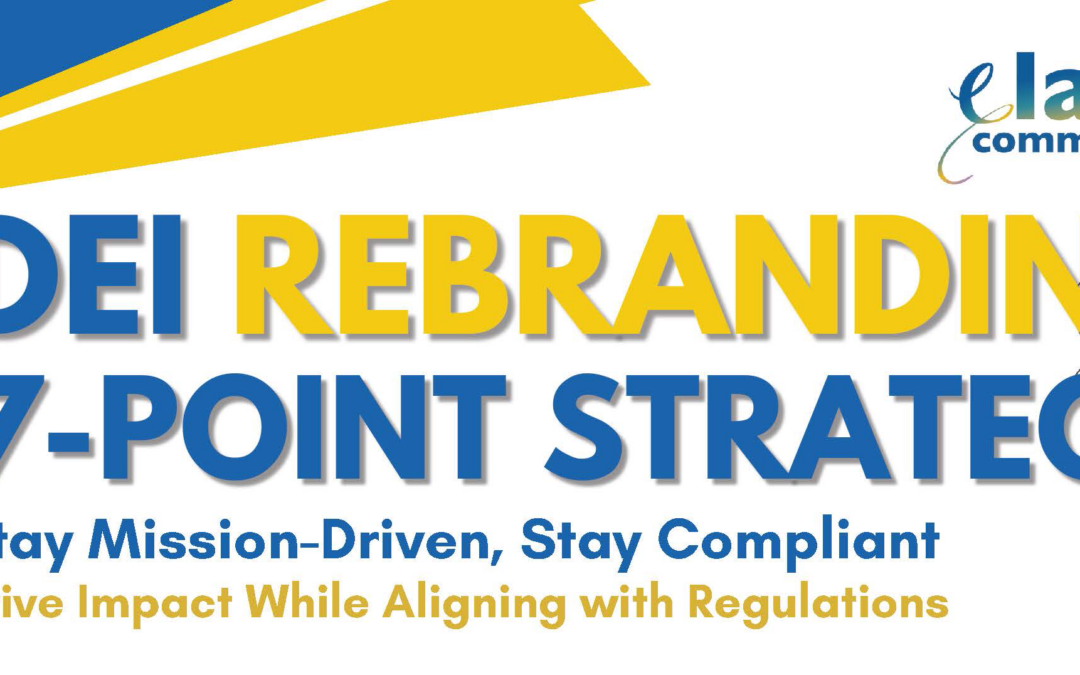Change is the only constant, they say. But in the workplace, even the most necessary shifts can be met with resistance. Whether it’s a new software rollout, a restructuring initiative, or a cultural transformation, human nature often defaults to the familiar. At Elation Communications, we understand that successful change management hinges on more than just a well-crafted plan; it requires a strategic communications approach that acknowledges and addresses the inevitable resistance.
So, how do you transform resistance into acceptance, and even enthusiasm? Here’s your roadmap:
1. Understand the Roots of Resistance:
Before crafting any communication, delve into the “why” behind the resistance. Common culprits include:
- Fear of the Unknown: Uncertainty about job security, new responsibilities, or the impact on daily workflows.
- Lack of Understanding: Insufficient information about the change and its rationale.
- Perceived Loss of Control: Feeling sidelined or excluded from the decision-making process.
- Disruption to Routine: Resistance to abandoning established habits and comfort zones.
- Past Negative Experiences: Previous change initiatives that failed or caused hardship.
Actionable Tip: Conduct surveys, focus groups, or one-on-one conversations to gather feedback and identify specific concerns.
2. Develop a Clear and Consistent Narrative:
Your communication strategy should be built around a compelling narrative that articulates:
- The “Why”: Clearly explain the need for change, linking it to the organization’s vision and goals.
- The “What”: Provide detailed information about the changes, including timelines, impacts, and benefits.
- The “How”: Outline the steps involved in the transition and the support available to employees.
- The “What’s In It For Me” (WIIFM): Emphasize the positive outcomes for employees, such as improved efficiency, career development, or a better work environment.
Actionable Tip: Craft key messages that are consistent across all communication channels, from emails and intranet posts to town hall meetings and training sessions.
3. Employ Multi-Channel Communication:
Reach your audience where they are. Utilize a variety of communication channels to ensure your message resonates with different preferences and learning styles:
- Formal Channels: Emails, newsletters, intranet updates, and official announcements.
- Interactive Channels: Town hall meetings, webinars, Q&A sessions, and online forums.
- Informal Channels: Team meetings, one-on-one conversations, and social media (where appropriate).
- Visual Aids: Infographics, videos, and presentations to simplify complex information.
Actionable Tip: Tailor your communication to the specific audience and channel. For example, use informal language and visuals for social media, and detailed reports for formal announcements.
4. Engage and Empower Employees:
Involve employees in the change process to foster a sense of ownership and reduce resistance:
- Seek Input and Feedback: Create opportunities for employees to share their concerns and suggestions.
- Establish Change Champions: Identify influential employees who can advocate for the change and provide peer support.
- Provide Training and Resources: Equip employees with the skills and knowledge they need to adapt to the new environment.
- Celebrate Successes: Acknowledge and reward employees who embrace the change and contribute to its success.
Actionable Tip: Create a feedback loop to continuously monitor and address employee concerns throughout the change process.
5. Lead with Empathy and Transparency:
Acknowledge the challenges associated with change and demonstrate empathy for employees’ concerns.
- Be Transparent: Communicate openly and honestly about the change, including potential challenges and risks.
- Listen Actively: Pay attention to employees’ concerns and respond thoughtfully and respectfully.
- Provide Support: Offer resources and assistance to help employees navigate the transition.
Actionable Tip: Train managers to communicate effectively and provide empathetic support to their teams.
The Elation Advantage:
At Elation Communications, we understand that strategic communication is the key to successful change management. We can help you:
- Develop a comprehensive communication strategy tailored to your organization’s unique needs.
- Craft compelling narratives that resonate with your employees.
- Utilize a variety of communication channels to reach your audience effectively.
- Engage and empower your employees to embrace change.
Don’t let resistance derail your organization’s progress. By implementing a strategic communications approach, you can navigate the rapids of change and emerge stronger than ever.
Contact Elation Communications today to learn how we can help you transform resistance into results.









